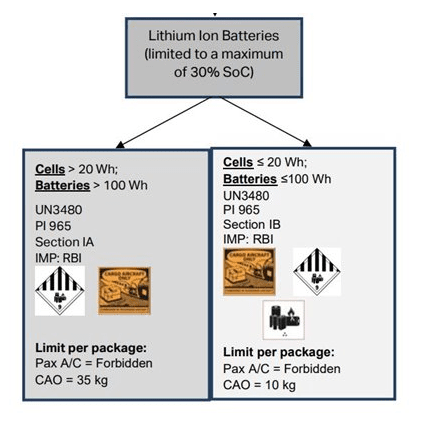Did you know there is a change coming for battery shipping? Check out the details below regarding shipping lithium-ion battery updates.
As of April 1, 2022, lithium-ion and lithium metal batteries or cells shipped separately will no longer be accepted for air transportation when prepared under Section II of the relevant IATA Dangerous Goods Regulations (DGR) Packing Instruction.
This revision affects the transportation of two UN ID numbers: UN 3480 and UN 3090—which are shipped by air using IATA DGR Packing Instructions (PI) 965 and 968, respectively.
What’s Changing on Friday, April 1?
Until now, lithium cells and batteries shipped alone by air could qualify for some relief from dangerous goods packaging, labeling, and paperwork requirements when prepared according to Section II of IATA DGR Packing Instructions 965 and 968.
As of April 1, the reliefs afforded to “Section II” shipments are no longer available for cells and batteries shipped alone. The less-restrictive Section II provisions may still be used to ship smaller lithium-ion and metal batteries and cells packaged in equipment or with equipment.
To continue shipping cells or batteries packaged by themselves—such as spare batteries or replacement batteries—shippers may need to review the shipping process and make sure cells and batteries are packaged, labeled, and documented correctly moving forward.
Note: Air carriers UPS and FedEx updated their IATA DGR Operator Variations years ago to require that smaller cells and batteries shipped separately be prepared according to Section IA or IB provisions for air transport.
IATA Lithium Battery Guidance 2022 Below are excerpts from IATA’s 2022 Lithium Battery Guidance Document, updated to reflect the revised regulations that take effect April 1.
Lithium-ion batteries and cells shipped separately (UN 3480) must be prepared according to Section IA or IB of PI 965, as shown below.

Comments are closed





